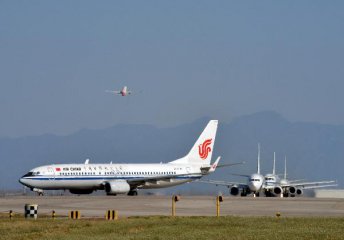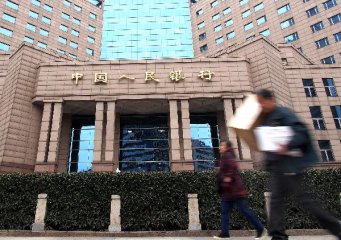
Foreign Direct Investment (FDI) between China and U.S. passed 60 billion U.S. dollars in 2016, more than any other year in history, said a report jointly released by the Rhodium Group and the National Committee on U.S.-China Relations (NCUSCR).
"U.S.-China two-way FDI reached an all-time high in 2016, elevating the importance of this facet of the bilateral economic relationship," said the joint report.
"What used to be a one-way street - with money flowing predominantly from the United States to China - is now a two-way highway with tens of billions of dollars in annual FDI flowing in each direction," it added.
According to the joint report, the cumulative value of U.S. FDI transactions in China reached over 240 billion U.S. dollars by the end of 2016, while the cumulative Chinese FDI in the U.S. totaled 110 billion dollars by the end of last year.
With Chinese economy growing robustly, Chinese investment in U.S. have expanded at record pace. In 2016, Chinese companies invested a record 46 billion dollars in U.S., tripling the amount seen in 2015 and a tenfold increase compared to just five years ago, said the joint report.
Apart from the rapid growth for two-way FDIs, the variety of investors and target industries have also expanded from traditional energy and real estate industries to consumer services and products industries, reflecting China's growing appetite for more investment in order to meet the growing domestic consumption demand.
According to the joint report, in contrast to the dominance of fossil fuel investments before 2013, more than 90 percent of Chinese FDI in 2016 focused on services and advanced manufacturing.
In 2016, real estate and hospitality, information and communications technology, entertainment, consumer products and financial services stood out as primary targeted industries for Chinese investment in U.S., said the joint report.
Chinese investors further expanded and deepened their footprint in U.S. in 2016.
U.S. coastal states, such as New York and California were still the major beneficiaries of Chinese investment, while South and Midwest states also received significant Chinese investment in 2016.
A separate report released by Rhodium Group showed that all 50 states and 98 percent of congressional districts in U.S. hosted operations of Chinese-owned companies by the end of 2016.
Private investors have become the major drive for the rapidly-growing Chinese investment in U.S, said the joint report. In 2016, about 79 percent of the total Chinese investment in U.S. were made by private companies.
The joint report expected that the Chinese investment in U.S. would moderate in 2017 compared to the record high in 2016, but the two-way FDI flows will remain a major component of U.S.-China economic interaction for years to come.
U.S. robust economic outlook, the large consumer end market and its large base of technology and brand assets will remain attractive to Chinese investors. However, it warned that Chinese investors would face greater uncertainty and political deal risk in U.S.
"Bilateral investment is a cultural as well as economic bridge between countries because it makes commerce a platform for the exchange of ideas," said Stephen A. Orlins, president of the NCUSCR.
Recalling working as a young lawyer representing the first wave of American investors in China in the 1980s, Orlins has learnt that investment between the U.S. and China helps increase understanding between the two countries and contribute to the overall relations.
"I became their eyes and ears about Americans, and they became my eyes and ears about China, and it created a bound which really was stronger than any other bound that occurs in business," Orlins said Wednesday at an event for the release of the report.
Citing the initial results of a 100-day action plan for China-U.S. comprehensive economic dialogue released last week, Robert Wang, former official at the U.S.
State Department and senior policy advisor at the U.S. law firm Covington & Burling, said there's a lot of optimism injected to the U.S.-China relations in recent months.
Some highlights of the outcome are that China will allow imports of U.S. beef; the United States is to import poultry from China. The United States expects China and other partners to import liquefied natural gas and China will allow wholly foreign-funded financial services to provide credit ratings in China.
Wang believed it's natural for the Trump administration to resume negotiations on a bilateral investment treaty (BIT) with China, as there are huge investments between the U.S. and China.
He expected the agreement to resume BIT negotiations likely to become part of final outcomes of the 100-day action plan, which is to be implemented by July 16.
Around 29 rounds of BIT talks have been held since China and the United States started negotiations in 2008 to increase mutual investment, which only accounted for a tiny share of their respective overseas investment.
The investment treaty is expected to continue to expand two-way trade and investment and cement the foundation of China-U.S. economic ties.
























Latest comments